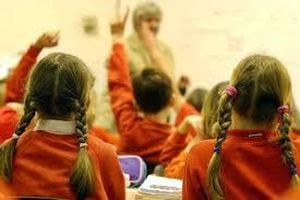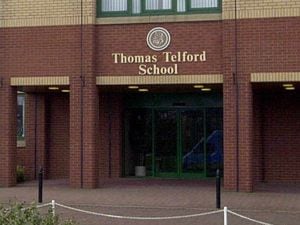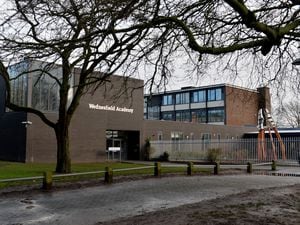REVEALED: Hundreds of schools are overcrowded
Hundreds of schools across the Black Country and Staffordshire are overcrowded, new figures show.

A total of 200 primary and secondary schools in the region are over capacity by more than 1,600 pupils, meaning students are forced to learn in cramped classrooms.
The National Education Union (NEU) has described it as an "unacceptable state of affairs”.
Wolverhampton
In Wolverhampton, the city had 21 primary schools that were either at full capacity or overcrowded last year, meaning schools were overcapacity by 117 pupils.
And this situation could worsen as an additional 4,117 pupils need to fit into 890 places planned by the council, according to figures provided by the Department for Education.
Meredith Teasdale, the City of Wolverhampton Council’s Director of Education, said: “Demand for educational provision in Wolverhampton has increased significantly in recent years, and this is good news as it shows people want to live and be educated in our growing city.
“The increase has principally been driven by a 24 per cent rise in births between 2002 and 2014, and the council has introduced more than 3,000 extra school places since 2012 to meet rising demand.
"There are circumstances where schools can exceed their admission limits, for example if a family gain a place in a preferred school through a successful school admissions appeal or through a place being allocated through the council’s Fair Access Protocol.
"We have also worked proactively to reach agreements with some schools to admit pupils over their admission limits, which has enabled more children to attend schools closer to their home.
"The data from 2018 shows that there were 52 schools that had not exceeded their capacity, meaning there is sufficient space in Wolverhampton's schools overall."
Dudley and Sandwell
In Dudley, a total of 19 primary schools and three secondary schools were either at their capacity or overcrowded. This means primaries were over capacity by 121 pupils and secondaries by 50.
The figures also show that an additional 1,335 pupils will need to fit into 480 places planned by the authority in the future.
In neighbouring Sandwell, 50 primary schools were overcapacity by 379 pupils and one secondary school was overcapacity by 24 pupils.
The council needs to fit 3,346 pupils into 1,420 planned places going forward.
Chris Ward, Sandwell Council's director of education, skills and employment, said: “Primary schools have been subject to increased demand over the last nine years following a significant increase in the birth rate and higher rates of inward migration.
“We have a responded by providing more than 5,000 new primary places across Sandwell since 2012 and will continue to monitor where demand is likely to exceed current provision. We have consistently managed to offer around 95 per cent of parents one of their first three primary preferences.
“Our projections suggest that there is now a sufficient level of primary places moving forward and we are now planning to provide new places in the secondary sector as higher numbers move through the system.
“Plans are already in hand with the building of a new 750 place secondary school in West Bromwich which will open in September 2019, and a further eight existing secondary schools have increased their capacity for the Year 7 admission this coming September. A further 2 new secondary schools are planned over the next few years."
Walsall
In Walsall, 32 schools were either full or overcrowded, including 26 primaries and six secondaries.
The figures mean primary schools were overcapacity by 103 pupils and secondary schools were overcapacity by 249 pupils. Going forward, Walsall Council will need to fit 1,613 additional pupils into 1,050 places.
A council spokesman said: "Whilst current numbers on roll at some primary schools in Walsall exceed the Published Admission Number (PAN) of the area, this is due to schools admitting above their PAN in line with school expansions rather than the Local Authority asking them to admit over number.
"Some schools that have undertaken school expansions have chosen to admit children into the older year groups in line with their new PAN even though there is no requirement for them to do so, this could create the impression that the school has more children on roll than they have the capacity for however this would not be correct."
Staffordshire
Staffordshire has 74 schools which were overcapacity last year by 593 pupils. The county council will need to fit 6,666 additional pupils will need to fit into 4,646 planned places going forward.
County Councillor Philip White, the cabinet member for learning and employability, said: “The issue of increased demand for school places, caused by a rising population, is a national one. In Staffordshire we anticipated this increase and have been planning and providing extra school places for a number of years.
"Over the past five years, the county council has added nearly 8000 primary and secondary school places, at a cost of £61 million. Our forward planning and investment in the provision of more school places over the past five years has also meant we have been consistently able to allocate more than 90% of parents their first choice of primary and secondary schools.
“Our extensive school building and expansion programme will continue, and it is our ambition to secure £330m to provide over 20,000 new school places by 2031.”
West Midlands
Across the whole West Midlands, 525 schools were full or overcrowded with more than 5,000 fewer spaces than pupils.
Andrew Morris, the assistant general secretary of the NEU said: “Our children and young people only get one chance for an education.
“This is the result of the Government’s inadequate planning for the increase in pupil numbers and its insistence that local authorities should not be permitted to open new schools.
“This lack of foresight, combined with the year-on-year funding squeeze, has resulted in the highest number of secondary school students in classes of more than 30 since 1982.
“Running schools in an incoherent fashion on a shoestring budget is not good enough.”
Education Secretary Damian Hinds added: “Children only get one chance at an education and they deserve the best, wherever they live and whatever their background.
“That’s why this Government is undertaking the biggest expansion in school places in two generations – and the statistics show we are well on track to create 1 million places this decade.
“With standards rising in our schools this will mean that more families have the choice of a good school place.”
The Department for Education say the number of pupils overcapacity has fallen from 97,000 in 2010 to 50,000 in 2018.





